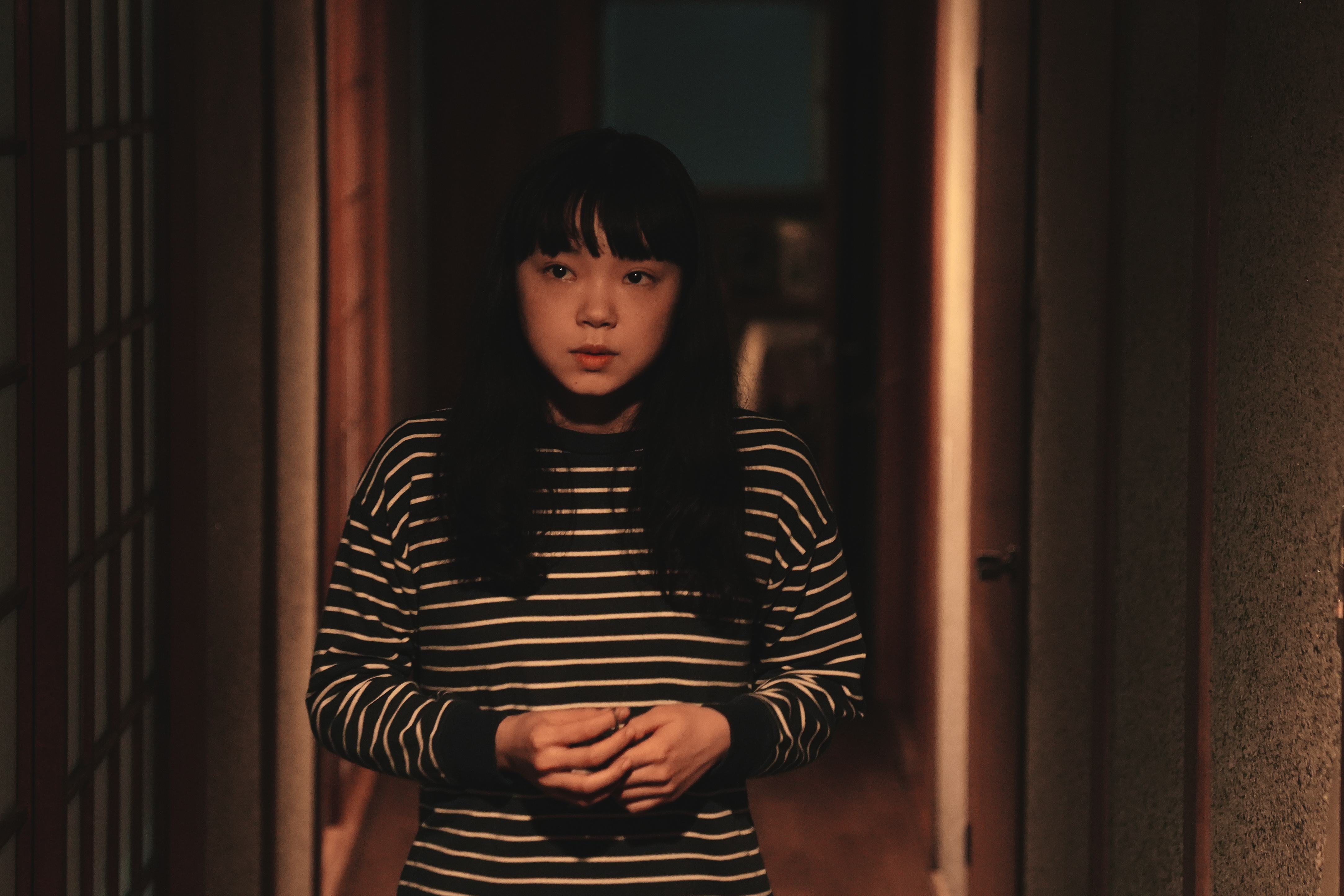After a few years of making short-films and advertisements, Yuto Shimotsu takes his chance to turn his 2021 award-winning horror short into a feature film for Kadokawa. Of course, with Takashi Shimizu, the legendary horror-director, as executive producer, the expectations increased tremendously. Is he up to the task? Can he match or even exceed such expectations? Or will he deliver another derivate horror that drives the spectator back into the arms of the J-horror classics of the nineties?
Review
One day, a young woman (Kotone Furukawa), who just woke up from a horrible nightmare, hears that, due to unforeseen circumstances, she’ll need visit her grandparents who live in the countryside all by herself.
Upon arriving at her grandparents’ home, she is warmly greeted and invited into the living room. Their light-hearted talk about becoming a nurse and marrying a doctor is suddenly disturbed when her grandmother suddenly changes to topic to her happiness. While she is taken aback by the question, she deflects the subjective impact of her signifiers by hastily providing them a positive answer. Not long thereafter, she finds a family picture where one child’s face is scratched out.
Best Wishes to All is a twisted horror narrative that relies entirely on atmosphere and disturbing the mirage of mundane everydayness – there are, in fact, little to no cheap jump-scares within Shimotsu’s narrative.
The narrative starts off with a nightmare. There are three elements that we, as spectators, need to retain: the young woman is in a state of being all alone, the monstrous Real that hides behind the door, and the door whose presence is real. Yet, rather than a dream that expresses an unsavoury desire, the spectator already feels that the imagery that haunts her in her sleep might be more real than it is fantasized.
Her return to the countryside where her grandparents live constitutes a repeated confrontation with strange elements, with acts and speech that while arising naturally from the societal field disturbs the equilibrium that our young woman assumes the field of the Other has. The strangeness that marks her grandparents, however, does not only have an estranging effect on her, but also an isolating one. For her grandparents, however, their disturbances fit their own equilibrium – their perception of the societal field always retains its consistency.
Not long after her return, she encounters one of her old friends (Koya Matsudai) who has taken over his parents’ farm. While talking about the reason why she decided to become a nurse – I just want to save people, he suddenly says to her that she should save him then. Yet, he immediately erases his subjective speech by framing his enunciation as a mere joke. Her grandfather, seeing him drop her off, orders her to not meet him again. This enunciation has, just like grandparents’ strange acts, an alienating effect and feeds her sense of being isolated.
By then, the spectator, just like the young woman, feels that the ripples that fleetingly distort the fabric of the rural society is caused by something that is left unsaid – a secret. This unsaid, which we leave vague on purpose, concerns an object that, strange as it may be, functions as the fundament of the grandparents’ happiness.
Happiness is presented within Best Wishes to All as built on the exploitation of an object, on the suffering of a sack of flesh and organs. Shimotsu, with his haunting horror narrative, confronts the spectator with the question whether happiness or one’s enjoyment is possible without any form of exploitation supporting it nor fuelled by the dimension of transgression. The finale, which brings life and death together in a thrilling and twisted way, offers the spectator a surprising yet bleak answer.
Yet, there is another reading possible, a more psychoanalytic one. One could also read the exploited thing as the object that the subject necessarily needs to separate from his own body to be able to enter the mundane field of neurotic everydayness. It is the morsel of jouissance that needs to extracted from our bodies to avoid entering the field of psychosis.
The composition, while relying mainly on the concatenation of static shots, also features some slow temperate dynamic movement. While some of these moments merely break the sequence of static shots, Shimotsu also utilizes the slowness of his dynamism to heighten the tension of that marks a given scene, tinge mundane moments with a drip of disquietude, and to deliver some horror-like moments within his narrative (Cine-note 1).
Of course, the effect of these moments of horror is also function of the effective use of musical accompaniment – the music gains in strength and the atmospheric tension rises in equal matter. Shimotsu, however, also utilizes the combination of slow dynamic movement and subtly disconcerting music to infuse a tinge of uneasiness into mere mundane moments (Cine-note 2).
It is, furthermore, by decorating his composition with such slow movement and subtly threatening music, that those certain shots of mundane acts (e.g. the grandmother cutting a block of meat, …etc. ) attain a disconcerting quality.
Best Wishes To All is a surprisingly satisfying horror-narrative. What makes Shimotsu’s film so good is that he found a style of horror that does not cheaply exploit well-trod compositional tricks and avoids being a mere knock-off of another director’s approach to horror. Shimotsu proves, in short, that one can still be creative in the horror-genre. In fact, he even offers others a glance at the path to take to make J-horror relevant again and regain its former acclaim.
Notes
Cine-note 1: One could argue that the non-threatening dynamic movement that opens the narrative strengthens the impact of the dynamic movement that emphasizes the threat.
Cine-note 2: Yet, as the music retains the same effect when coupled with static moments, we need to conclude that music is the main instrument to evoke tension and create a sense of uneasiness.





6 Comments Add yours